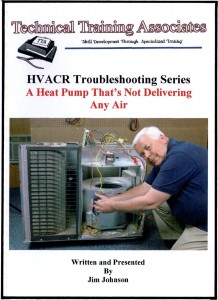Ventilation and indoor air quality have long been issues of concern for building owners and facility managers across the country. Recent news headlines involving the spread of air-borne diseases and the effects of sick-building syndrome, among other topics, are driving the attention given to these subjects to new levels of alarm. Nowhere is this more evident than within the hospitality industry.
Over the past few years, the number of hotels, convention halls, and conference centers undergoing HVAC-related renovation projects has spiked. An increasingly upbeat economy, easier access to funding, and the shifting customer demand for healthy, sustainable travel experiences have all played a role in this surge. According to the Preston Robert Tish Center for Hospitality, one out of five existing properties across the U.S. today are involved in some measure of renovation.
For some facilities, like the JW Marriott hotel in Atlanta’s affluent Buckhead district, it’s technological innovation and the promise of low-risk, high-return results that motivated action.
The Buckhead Marriott had always been a model of elegance and luxury. Still, owners of the building struggled with issues related to a poorly designed ventilation system. Inadequate exhaust led to musty odors that plagued the building for years. With long ventilation shafts embedded behind the building’s structure, accessing and repairing the problem had proven to be logistically and economically impossible.
A consultant brought in to evaluate the situation found that exhaust levels differed substantially from floor to floor. Top floors received the full 40 CFM of exhaust the system was designed to pull, while bottom floors received only 5 CFM or less. The consultant’s recommended solution: start by cleaning and sealing each of the ten 22-story ventilation shafts running down the length of the building.
After researching and reviewing all available options, the hotel engineers decided that the latest innovation in duct sealing, an aerosol-based sealing solution was the obvious choice for the job.
“We looked at all the ways we could tackle the problem and the aerosol spray technology stood out as being the most economical and the least intrusive process of the bunch,” said Frank Atkins, the hotel’s director of engineering.
A quick search of service providers led hotel administrators to Aeroseal Southeast, local-area experts in duct cleaning and sealing. A preliminary meeting between the two parties afforded each an opportunity to review the parameters of the project and shortly after, a starting date for the cleaning and sealing work was set.
Before the sealing process began, the experts at Aeroseal Southeast and Marriott management worked together to develop a strategy to address one of the hotel’s biggest concerns – minimizing disruption to hotel guests. Like most hospitalities, the Marriott operates 24/7. Ensuring that guests would not be disturbed during the renovation remained a high priority throughout the project.
Being adjacent to a popular shopping mall, the hotel typically sees an influx of guest bookings on the weekend when nearby stores are busiest. A second wave of guests - business travelers - usually arrive on Monday evenings. To accommodate the hotel, Aeroseal Southeast agreed that they would limit all sealing work to Mondays only, starting early in the morning and finishing before the arrival of the business rush. At the same time, hotel administrators agreed to book rooms away from the areas where the sealing would take place during that day. A preemptive call to the hotel a few days before each Monday allowed hotel management to assess the current situation and to call off the work if guest bookings made the situation unfavorable.
Prep work involved the temporary blocking of registers located in each room and controlled by the targeted ventilation shaft. This way, any sealant blown into the pressurized ventilation duct would have only one escape route – through the individual leaks existing in the shaft. The sealing equipment was set up on the hotel’s rooftop and the Aeroseal system was connected to the targeted shaft via a long flexible tube that ran from the sealing equipment to the shaft endpoint, the exposed hole that was easily accessible with the removal of the rooftop fans.
Once prep work was completed, it took only about one hour to seal each shaft. Using his own testing equipment, Atkins confirmed what the computerized aeroseal system indicated: average leakage for each ventilation duct was reduced from around 400 CFM down to around 60 CFM. When completed, the entire process reduced leakage of all 11 shafts by nearly 90% - from a total of 4,670 CFM to 553 CFM. During the entire process, few if any guests were even aware that such a significant remediation process was taking place.
In the end, the musty odors that plagued the hotel for years were eliminated – the facility manager expects the energy bill for the 28-year old building to reflect thousands of dollars in annual savings as well.
“Aerosealing the ductwork proved to be a significant aide in improving the overall ventilation of the building,” said Atkins. “I think it’s a good technology, and it proved to be a key component of the overall strategy used to solve our ventilation issues.”
Publication date: 12/4/2017
Want more HVAC industry news and information? Join The NEWS on Facebook, Twitter, and LinkedIn today!







